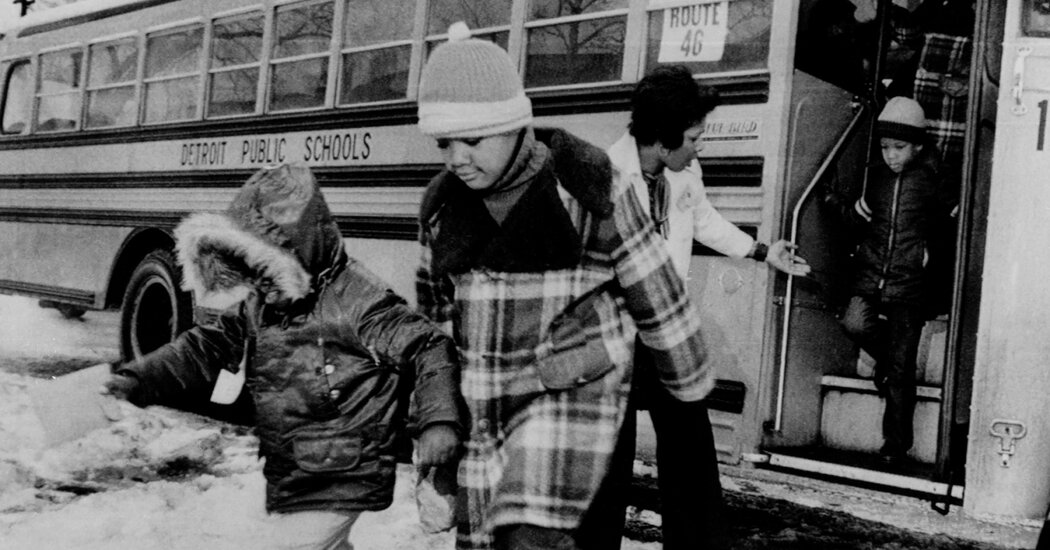In June 1972, Judge Roth ordered a broad integration plan, which included such prosperous suburbs as Grosse Pointe and Bloomfield Hills in the same “metropolitan” school district as Detroit. That is, he established a system of “busing” — a word that was every bit as politically incendiary at that time as “trans” is today. The suburbs recoiled in horror, and politicians joined in.
On May 16, 1972, George Wallace, the segregationist Alabama governor, had ridden an antibusing platform to a smashing victory in the Michigan Democratic presidential primary. (He had been shot and paralyzed in Maryland the previous day.) Richard Nixon, running for re-election, had demanded “an immediate halt to all new busing orders by federal courts,” and his campaign responded to Roth’s ruling with a TV ad declaring: “President Nixon believes busing is wrong. And he intends to do something about it.” Meanwhile, the state of Michigan appealed Roth’s order to the Supreme Court in a case called Milliken v. Bradley.
The issue before the court was profound. In Brown, the court held that segregating students by race was unconstitutional, but how did this ruling apply to schools located in neighborhoods that happened to be racially segregated — in other words, when racial separation was not a binding policy of the school district (de jure segregation) but the reality of the community (de facto segregation)? By 1974, Nixon had placed four new justices on the court, and they formed the core of the 5-to-4 majority that voted that July to overturn Roth’s desegregation plan on the grounds that the Constitution compelled states to remedy only de jure, not de facto, segregation. (Roth himself died of a heart attack at 66, just before the Supreme Court’s decision was announced.)
In an apt summary, Adams writes that Chief Justice Warren Burger’s majority opinion was “grounded in white innocence. … There was no acknowledgment of how Blacks were locked in specific Detroit neighborhoods and mostly Black schools, and then into an ever-expanding urban core that was hermetically sealed off from the suburbs.” Though a subsequent, much more modest plan by Roth’s successor, another federal judge, attempted to address segregation within Detroit, it affected just 10 percent of the students in the city’s school system and left many schools untouched. (Adams observes that in this period, there was actually more successful court-ordered integration in the public schools of the South, because municipalities there tended to include the suburbs, while in the North suburban towns were often legally separate from the cities they abutted.) In all, as Adams puts it, “Milliken was where the promise of Brown ended.”
